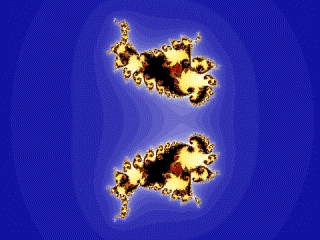Physics Causing Abundance, Possibly a New Science
I suspect there is a physical constant at the core of abundance. I believe the constant is related to the relationship between the amount of information and the amount of matter involved in providing a good. This could be a huge break through for science and economics.
I don’t have the resources to explore this idea so I’m tossing it out there for someone else to develop. All I ask is you credit me with the concept. If someone wants to provide the resources I would gladly do the research.
Many people have heard of Moore’s Law or at least the effect. The number of components that fit on to a microchip doubles every 18 months. That means every 18 months new electronics such as computers are twice as powerful as the previous generation. Moores Law has been functioning consistently since the 1970’s.
Ray Kurzweil has a presentation where he points out computers aren’t the only thing with the doubling effect.
Almost all technology has some doubling. The rates of doubling are different for each technology but each one has a consistent doubling rate. So why is the rate consistent?
Innovation is an information processing activity. You analyze desires, which are information, then use information to affect something physically resulting in the desire being satisfied. There is a material component and an informational component to innovation. In fact everything in the universe has an informational component. Read more
Mathematics Behind Predictive Innovation
FutureMaps created using the Predictive Innovation Method are truly maps of the innovation space. Each innovation has a specific address and any desired set of innovations can be located by using the proper combination of parameters.
The Predictive Innovation Method constructs an n dimensional taxonomy (hypercube) to describe the innovation space. This is in essence a fractal model. By increasing dimensions, greater resolution can be achieved at predictable levels. This improves upon hierarchical taxonomies by allowing for multiple classifications and sparsely populated hypercubes.
Similar approaches have been used in computer graphics to highly accurately represent natural systems. This shares some similarity to the work of Stephen Wolfram on cellular automata models.

Extra Credit
If all that was a bunch of geeky gobly gook to you then you can at least enjoy the pretty picture and this fun song by Jonathan Coulton’s called “Mandelbrot Set”. You might want to visit his website. He has some great music and he has done some cool things with Creative Commons.
Mathematics Behind Predictive Innovation®
FutureMaps created using the Predictive Innovation® are truly maps of the innovation space. Each innovation has a specific address and any desired set of innovations can be located by using the proper combination of parameters.
The Predictive Innovation® constructs an n dimensional taxonomy (hypercube) to describe the innovation space. This is in essence a fractal model. By increasing dimensions, greater resolution can be achieved at predictable levels. This improves upon hierarchical taxonomies by allowing for multiple classifications and sparsely populated hypercubes.
Similar approaches have been used in computer graphics to highly accurately represent natural systems. This shares some similarity to the work of Stephen Wolfram on cellular automata models.

Extra Credit
If all that was a bunch of geeky gobly gook to you then you can at least enjoy the pretty picture and this fun song by Jonathan Coulton’s called “Mandelbrot Set”. You might want to visit his website. He has some great music and he has done some cool things with Creative Commons.



 Predictive Innovation Training
Predictive Innovation Training Predictive Innovation: Core Skills Book
Predictive Innovation: Core Skills Book RoundSquareTriangle.com
RoundSquareTriangle.com